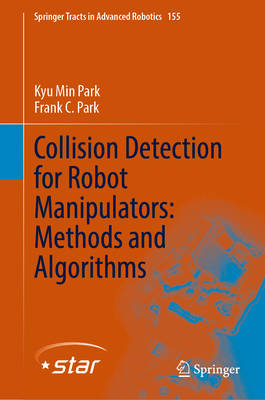
- Retrait gratuit dans votre magasin Club
- 7.000.000 titres dans notre catalogue
- Payer en toute sécurité
- Toujours un magasin près de chez vous
- Retrait gratuit dans votre magasin Club
- 7.000.000 titres dans notre catalogue
- Payer en toute sécurité
- Toujours un magasin près de chez vous
137,45 €
+ 274 points
Format
Description
This book provides a concise survey and description of recent collision detection methods for robot manipulators. Beginning with a review of robot kinodynamic models and preliminaries on basic statistical learning methods, the book covers fundamental aspects of the collision detection problem, from collision types and collision detection performance criteria to model-free versus model-based methods, and the more recent data-driven learning-based approaches to collision detection. Special effort has been given to describing and evaluating existing methods with a unified set of notation, systematically categorizing these methods according to a basic set of criteria, and summarizing the advantages and disadvantages of each method. This book is the first to comprehensively organize the growing body of learning-based collision detection methods, ranging from basic supervised learning methods to more advanced approaches based on unsupervised learning and transfer learning techniques. Step-by-step implementation details and pseudocode descriptions are provided for key algorithms. Collision detection performance is measured with respect to both conventional criteria such as detection delay and the number of false alarms, as well as criteria that measure generalization capability for learning-based methods. Whether it be for research or commercial applications, in settings ranging from industrial factories to physical human-robot interaction experiments, this book can help the reader choose and successfully implement the most appropriate detection method that suits their robot system and application.
Spécifications
Parties prenantes
- Auteur(s) :
- Editeur:
Contenu
- Nombre de pages :
- 122
- Langue:
- Anglais
- Collection :
- Tome:
- n° 155
Caractéristiques
- EAN:
- 9783031301940
- Date de parution :
- 20-05-23
- Format:
- Livre relié
- Format numérique:
- Genaaid
- Dimensions :
- 162 mm x 236 mm
- Poids :
- 340 g







